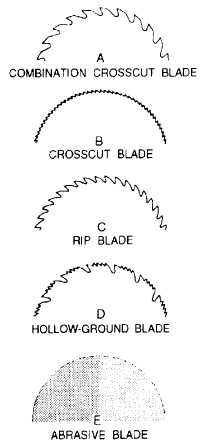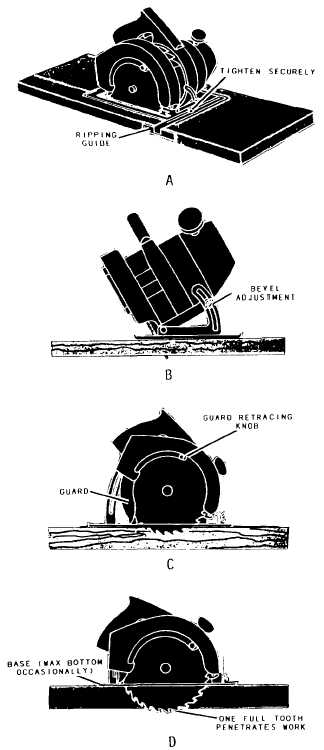worm-drive (view B). Circular saws can use many different types of cutting blades, some of which are shown in figure 3-16.
COMBINATION CROSSCUT AND RIP BLADES. - Combination blades are all-purpose blades for cutting thick and thin hardwoods and softwoods, both with or across the grain. They can also be used to cut plywood and hardboard.
CROSSCUT BLADES. - Crosscut blades have fine teeth that cut smoothly across the grain of both hardwood and softwood. These blades can be used for plywood, veneers, and hardboard.
RIP BLADES. - Rip blades have bigger teeth than combination blades, and should be used only to cut with the grain. A rip fence or guide will help you make an accurate cut with this type of blade.
HOLLOW-GROUND BLADES. - Hollow-ground blades have no set. They make the smoothest cuts on thick or thin stock. Wood cut with these blades requires little or no sanding.
ABRASIVE BLADES. - Abrasive blades are used for cutting metal, masonry, and plastics. These blades are particularly useful for scoring bricks so they can be easily split.
Figure 3-17 shows how versatile the circular saw can be. To make an accurate ripping cut (view A), the

Figure 3-16.-Circular saw blades.

Figure 3-17.-Different ways to use a circular saw.
Continue Reading